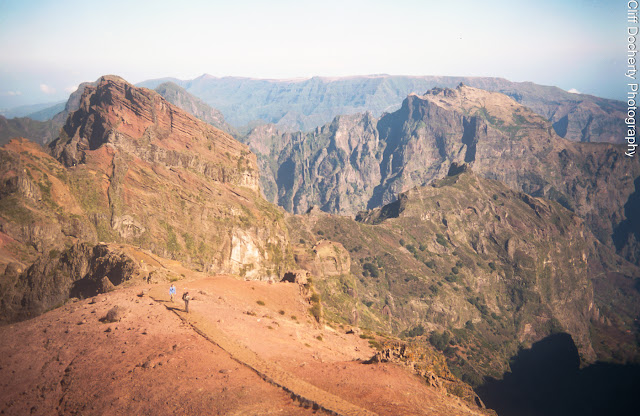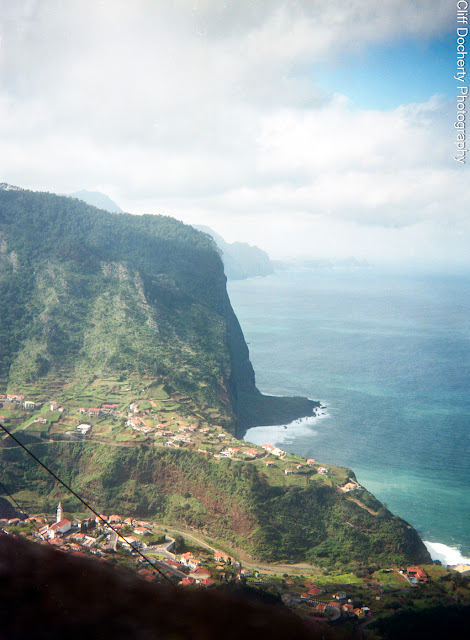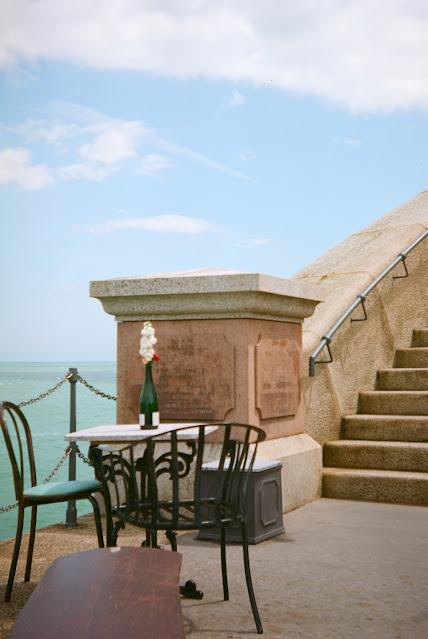The first thing to remember about a box brownie is that what was simple in 1950's seems unbelievably complicated in the 2020's if all you've been used to is a point and shoot on your phone or even a standalone camera if you're a bit older, and yet these babies were marketed as simplicity themselves. What could be simpler than a box, a button and a viewfinder? Turns out there's a lot that can go wrong and I had an earful of $£% and even a # and a ^&^ when I recently gave my brownie to a less experienced person to try out. OK I admit it, it was a cruel experiment but mostly I was trying to prepare for this article because after 50 years of using the thing I don't think twice, but clearly to the uninitiated you have to think in triplicate, and then some.
First there's loading the film. There's any number of YouTube videos to show you how to do it but its fraught with danger, the easiest being you drop the roll and it unravels, exposing itself to the light. In practice I've never done that. not even as an 8 year old kid, but its possible, so its best loaded in subdued light. Back in the day the films for these cameras were typically rated at 25 or 32 (try handholding at those speeds and honestly, respect for the people who shot those family archives soars). It wasn't till I was a young man about town in the 80's that 100 was considered a standard speed and 400 fast, so it makes me smile when I hear 400 referred as standard and 100 slow when often its the same cameras which the film is being used in. Anyhow, thanks to modern film latitude, we can get away with modern faster films in these old cameras despite their usually fixed shutter speeds being geared up for these older emulsions. So assuming you've opened the camera back, remembered to swap the spools round and rolled the leader onto the take up spool (with the back closed), a good tip is to cover the red window with some masking tape once you reach frame no. 1. Its not unknown for light to seep through the backing paper though with modern films it shouldn't happen. If you're using re-rolled 120 film onto 3D printed 620 spools or have a stash of original recycled 620 spools and you've used something more obscure than the usual Ektar or Portra you might be glad you did it.
So you just point and shoot?
Well that depends on what you're using. My particular beast of burden is a 1957 Kodak Brownie Flash IV. Made in the UK not a million miles from where I live now in North London, it was the top of the range of the brownies at the time, coming in a faux pigskin covering with a brass top plate that hearkened back to the glory days of early commercial photography in the Victorian and Edwardian era. Apart from the shutter button there is a control to let you switch between 'B' for long exposures for which you would need a tripod and cable release, and 'I' for regular photography, and two sliders for filters. Filters? Sounds a bit modern if you ask me. Well before everyone clutches their pearls, one is a yellow filter for increasing contrast when shooting in black and white, the other is a close up lens for shooting between 5 and 10 feet, though in practice I've always found this a bit hit and miss. This is a camera that really doesn't like things being too close by. It has a very simple lens, and it shows with the softness and fringing which particularly shows up because the negatives are huge. And I don't mean any old huge. I mean sell your mother these are almost photos themselves huge. Gi-actual-normous. Well of course they are. That's why there's only 8 pics to a roll. But my friends, when you get it right with this camera, you get a tingle in places you really shouldn't.
So having worked out the knobs and buttons, the next thing is framing. And to do that you have to look at your waistline. OK, that's something I try to avoid if I can help it, especially after lunch. A gentleman of a certain age can gain weight just by thinking about a bacon sandwich but, ignoring your belly, to take a photo with a box brownie you have to hold the camera to your waist and look down, so the first thing is that all of your photos are framed with a willy or nonny eyed view of the world instead of the regular five or six feet up in the air version we're accustomed to, but that's ok because that's you're first lesson. The camera is making you think about a different angle of view. The second thing the camera is throwing at you is that the image is reversed so you have to really look at what you're seeing and think about it for a few moments. Is it level? Is it composed? Am I holding it steady? Maybe I don't want it at my waist, how would it look twisted sideways? What about if I hold it up in the air above me? (We're talking about the camera here, not the waist.....) What if I angle it up from my feet?
See what's happening? You're working slooooowly. You only have 8 shots and its expensive. You don't want to mess up. Film photography recently has gone back to being expensive like it was in the 1950's so these pics matter. You're thinking about the shot and the alternatives, and do I really want this. Is it art? Is it a special moment? Does this matter to me? If it doesn't, why am I pressing the damn shutter because its going to cost me twenty quid to look at some crappy photos. What's beautiful today? What's quirky? What's important? What do I want to remember? That humble box brownie can teach us all of that. The whole camera is a filter. In a life of now now now, the camera is saying in a minute, hang on, not right now.
Picture taken, you have to remember to move the frame on. How you do that is up to you but remember to be consistent or you'll have double exposures (though why not experiment and try a few). Shoot and move on, or move on just before you shoot the next one. Another thing to remember. Shooting with a brownie means remembering things. But that means you're crafting the picture, from the planning to the execution of it. You're making a photo, not taking a photo. That's the tactile experience that comes with these old cameras and is why I spend as much time on analogue as I do on digital. Both give me different types of satisfaction and there is room for both in my own life.
In best Blue Peter tradition, here's one (or two) I made earlier. A small computer, tablet or phone screen doesn't do these images justice. They need to be seen as large format prints because they're analogue, but here they are anyway. Happy shooting.
Mountain Tops in Madeira, Portugal
Cliff top villages, Madeira
Table for Two, Folkestone Harbour, England
Street Scene, Beijing






Comments
Post a Comment